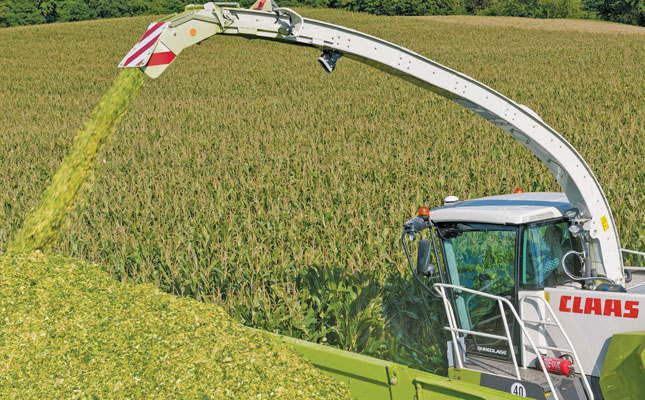Efficiency in a grain, fruit or poultry operation is often measured in terms of the lowest production cost per ton. (In a dairy, it is the lowest cost per litre of milk.)
All farmers would agree on the importance of efficiency to profitability. At the same time, many feel that owning a tractor is a hallmark of being a farmer.
However, managing a fleet of tractors is not always the best way to improve efficiency. The focus should instead be on the production system as a whole.
In the light of this, a fully fledged mechanisation contracting solution may be what is needed to further optimise a farming operation.
Contract harvesting is not new, of course, to the South African farmer. Scale largely determines the type of equipment that a farmer can afford, while a contractor is just a phone call away.
Soya bean, in particular, requires a capacity to harvest the crop in a narrow window. However, South Africa’s contract harvesting model does not necessarily warrant investing in the latest technology; this means that many contractors use older, well-maintained equipment that does not operate at the highest efficiency curently available.
In the US, we see a different approach. Here, large equipment manufacturers develop their new combine harvesters in collaboration with contractors.
Dairy vs grain
Dairy and feedlot operations are slightly different to a grain farming operation in that a producer can measure the effect of changes in input material far more frequently than a grain farmer can.
(The cow produces milk daily and the maize is harvested once a year.) This means that the benefit of high-tech machinery appears sooner and more often in dairy and feedlot trials.
These and other operational aspects intrinsic to a feedlot and dairy operation result in an environment that is condusive to high-tech contracting.
Technology enables traceability and transparency that give farmers peace of mind when paying a slightly higher contracting bill than the rest of the market, but they gain with increased efficiency.
Committed to improvement
In 1921, patent #372140 registered by CLAAS for the ‘knotter’ arguably set the company up for what it is today: a leader in hay and forage equipment design and manufacturing.
To enhance the company’s contribution to the success of many dairy farms worldwide, CLAAS acquired the Shredlage technology developed in the US.
Co-founders of the technology, Roger Olson and Ross Dale, both work as dairy nutritionists in the US. For years they supported the trend for short cut lengths, but finally realised that this was not optimal for the cow’s rumen.
They therefore started running trials on longer cut lengths of shredded material and soon saw the benefits. Farmers worldwide have come to appreciate these too.
Shredlage processing of maize silage involves chopping the maize into sections of between 26mm and 30mm theoretical length of cut (TLOC) as opposed to 12mm to 19mm TLOC.
The Shredlage cracker is the key to the success of the technology. Grooves on the rollers are laid out to shred the material lengthwise, ensuring better grain processing. The higher speed differential between rollers also improves the shredding effect.
The intensive conditioning of the material enlarges the surface area of the chopped product many times over in a way designed to significantly improve bacterial fermentation after ensiling and, above all, during digestion in the cow’s rumen.
Structural effects
The aim of this process is to substantially increase the structural effects of maize silage in the rumen while simultaneously adding to the availability of the starch contained in all plant parts.
Optimal starch conditioning allows for reducing concentrate rates while increasing milk yield. The need to supplement with highly structured fodder such as straw can be reduced or even eliminated altogether, producing even more savings.
The University of Wisconsin-Madison in the US conducted controlled feeding trials on Shredlage silage. Their key finding was that fat and energy corrected milk production; on 14 eight-cow groups of different breeds, parity and days in milk increased significantly.
Scale meets efficiency and profitability
A smaller commercial farming operation may not realise payback on the heavy capital outlay required when investing in equipment. Adopting the latest mechanisation technology is increasingly more difficult to justify.
Technology such as the CLAAS Shredlage solution, with its clear financial benefits, may pave the way for the next generation in contracting.
Here, a contractor working at high efficiency can fulfil more mechanisation needs, enabling the business to consolidate clients, in turn allowing for investment in the latest technology.
Stehan Cloete, a mechanical engineer, is the director of AgTech Africa. Email him at stehan@agtech-africa.com.



